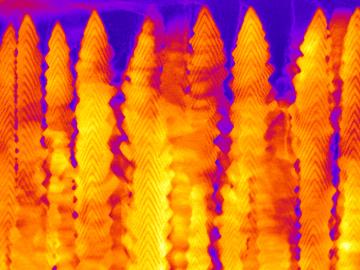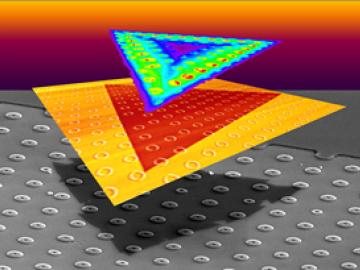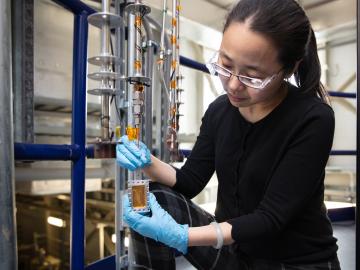
Filter News
Area of Research
- (-) Materials (63)
- (-) National Security (10)
- Advanced Manufacturing (1)
- Biological Systems (1)
- Biology and Environment (107)
- Biology and Soft Matter (1)
- Computational Engineering (1)
- Computer Science (3)
- Energy Science (97)
- Fusion and Fission (5)
- Isotopes (22)
- Materials for Computing (9)
- Neutron Science (23)
- Nuclear Science and Technology (5)
- Quantum information Science (5)
- Supercomputing (83)
News Type
News Topics
- (-) Bioenergy (13)
- (-) Energy Storage (26)
- (-) Environment (17)
- (-) Isotopes (11)
- (-) Quantum Science (11)
- (-) Summit (3)
- 3-D Printing/Advanced Manufacturing (19)
- Advanced Reactors (3)
- Artificial Intelligence (20)
- Big Data (5)
- Biology (8)
- Biomedical (6)
- Biotechnology (1)
- Buildings (4)
- Chemical Sciences (28)
- Clean Water (2)
- Composites (5)
- Computer Science (30)
- Coronavirus (4)
- Critical Materials (8)
- Cybersecurity (19)
- Exascale Computing (2)
- Frontier (2)
- Fusion (6)
- Grid (8)
- High-Performance Computing (7)
- ITER (1)
- Machine Learning (15)
- Materials (59)
- Materials Science (57)
- Mathematics (1)
- Microscopy (20)
- Molten Salt (2)
- Nanotechnology (31)
- National Security (35)
- Neutron Science (30)
- Nuclear Energy (16)
- Partnerships (15)
- Physics (26)
- Polymers (11)
- Quantum Computing (2)
- Security (10)
- Simulation (1)
- Space Exploration (1)
- Transportation (9)
Media Contacts

A team led by the Department of Energy’s Oak Ridge National Laboratory synthesized a tiny structure with high surface area and discovered how its unique architecture drives ions across interfaces to transport energy or information.

In the race to identify solutions to the COVID-19 pandemic, researchers at the Department of Energy’s Oak Ridge National Laboratory are joining the fight by applying expertise in computational science, advanced manufacturing, data science and neutron science.

Energy storage startup SPARKZ Inc. has exclusively licensed five battery technologies from the Department of Energy’s Oak Ridge National Laboratory designed to eliminate cobalt metal in lithium-ion batteries. The advancement is aimed at accelerating the production of electric vehicles and energy storage solutions for the power grid.

An international team of researchers has discovered the hydrogen atoms in a metal hydride material are much more tightly spaced than had been predicted for decades — a feature that could possibly facilitate superconductivity at or near room temperature and pressure.

The formation of lithium dendrites is still a mystery, but materials engineers study the conditions that enable dendrites and how to stop them.

Students often participate in internships and receive formal training in their chosen career fields during college, but some pursue professional development opportunities even earlier.

Researchers at the Department of Energy’s Oak Ridge National Laboratory have received five 2019 R&D 100 Awards, increasing the lab’s total to 221 since the award’s inception in 1963.

A team led by scientists at the Department of Energy’s Oak Ridge National Laboratory explored how atomically thin two-dimensional (2D) crystals can grow over 3D objects and how the curvature of those objects can stretch and strain the

OAK RIDGE, Tenn., May 7, 2019—Energy Secretary Rick Perry, Congressman Chuck Fleischmann and lab officials today broke ground on a multipurpose research facility that will provide state-of-the-art laboratory space

Researchers at the Department of Energy’s Oak Ridge National Laboratory, Pacific Northwest National Laboratory and Washington State University teamed up to investigate the complex dynamics of low-water liquids that challenge nuclear waste processing at federal cleanup sites.


